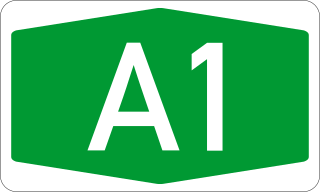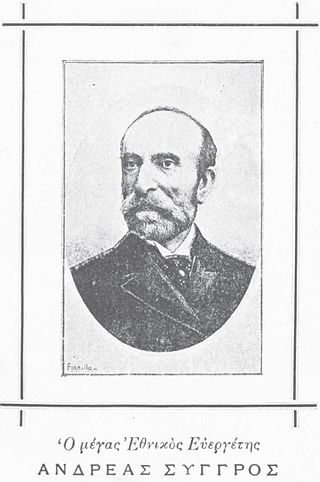Related Research Articles

Lavrio, Lavrion or Laurium is a town in southeastern part of Attica, Greece. It is part of Athens metropolitan area and the seat of the municipality of Lavreotiki. Laurium was famous in Classical antiquity for its silver mines, which was one of the chief sources of revenue of the Athenian state. The metallic silver was mainly used for coinage. The Archaeological Museum of Lavrion shows much of the story of these mines.

The Ludlow Massacre was a mass killing perpetrated by anti-striker militia during the Colorado Coalfield War. Soldiers from the Colorado National Guard and private guards employed by Colorado Fuel and Iron Company (CF&I) attacked a tent colony of roughly 1,200 striking coal miners and their families in Ludlow, Colorado, on April 20, 1914. Approximately 21 people were killed, including miners' wives and children. John D. Rockefeller Jr. was a part-owner of CF&I who had recently appeared before a United States congressional hearing on the strikes, and he was widely blamed for having orchestrated the massacre.

The Western Federation of Miners (WFM) was a labor union that gained a reputation for militancy in the mines of the western United States and British Columbia. Its efforts to organize both hard rock miners and smelter workers brought it into sharp conflicts – and often pitched battles – with both employers and governmental authorities. One of the most dramatic of these struggles occurred in the Cripple Creek district of Colorado in 1903–1904; the conflicts were thus dubbed the Colorado Labor Wars. The WFM also played a key role in the founding of the Industrial Workers of the World in 1905 but left that organization several years later.

The A1 motorway, also known as the Athens–Thessaloniki–Evzonoi (A.Th.E.) motorway, and formerly the Patras–Athens–Thessaloniki–Evzonoi (P.A.Th.E.) motorway, is the 2nd longest motorway in Greece with a length of 550 km. It is the principal north–south road connection in Greece, connecting the country's capital Athens with the regions of Thessaly and Macedonia, as well as the country's second largest city, Thessaloniki. It starts from Neo Faliro in Attica and continues north to reach the Evzonoi border station, on the Greek border with North Macedonia.

The Coal strike of 1902 was a strike by the United Mine Workers of America in the anthracite coalfields of eastern Pennsylvania. Miners struck for higher wages, shorter workdays, and the recognition of their union. The strike threatened to shut down the winter fuel supply to major American cities. At that time, residences were typically heated with anthracite or "hard" coal, which produces higher heat value and less smoke than "soft" or bituminous coal.
The bituminous coal miners' strike was an unsuccessful national eight-week strike by miners of bituminous coal in the United States, which began on April 21, 1894.
Anarchism in Greece traces its roots to ancient Greece but was formed as a political movement during the 19th century. It was in the ancient era that the first libertarian thoughts appeared when philosophers based on rationality questioned the fundamentals of tradition. Modern anarchism in Greece emerged in the 19th century, heavily influenced by the contemporary European classical anarchism. Because of the Bolshevik success in the Russian Revolution of 1917 and the rise of the Communist Party, anarchism faded after the first decades of the 20th century. The collapse of the military junta put an end to the monopoly of the political power from the Right, whereas the dissolution of the Soviet Union diminished the allure of the Communist Party of Greece allowing anarchist groups to gain pace in Athens and other cities.

Andreas Syggros was a Greek banker from Istanbul, at the time known internationally as Constantinople, and a philanthropist. Born in Istanbul to Chiot parents who left the island due to the Massacre of Chios, Syggros was one of the founders of the Bank of Constantinople along with Stephanos Skouloudis. Syggros married Iphigenia Mavrokordatou of the wealthy merchant Mavrocordatos family; they never had any children. They moved to Athens in 1871 where Syggros planned to found a new bank. Buying land from the widow of Dimitrios Rallis, Syggros engaged the well-known Athenian architect Nikolaos Soutsos who built his home based on plans by the German Ernst Ziller, across from the Royal Palace. Today the mansion is the headquarters of the Greek Foreign Ministry, having been left to the state by his widow.

The Estevan riot, also known as the Black Tuesday Riot, was a confrontation between the Royal Canadian Mounted Police and striking coal miners from nearby Bienfait, Saskatchewan, which took place in Estevan, Saskatchewan, on September 29, 1931. The miners had been on strike since September 7, 1931, hoping to improve their wages and working conditions.
The Copper Country strike of 1913–1914 was a major strike affecting all copper mines in the Copper Country of Michigan. The strike, organized by the Western Federation of Miners, was the first unionized strike within the Copper Country. It was called to achieve goals of shorter work days, higher wages, union recognition, and to maintain family mining groups. The strike lasted just over nine months, including the Italian Hall disaster on Christmas Eve, and ended with the union being effectively driven out of the Keweenaw Peninsula. While unsuccessful, the strike is considered a turning point in the history of the Copper Country.
The Leadville miners' strike was a labor action by the Cloud City Miners' Union, which was the Leadville, Colorado local of the Western Federation of Miners (WFM), against those silver mines paying less than $3.00 per day. The strike lasted from 19 June 1896 to 9 March 1897, and resulted in a major defeat for the union, largely due to the unified opposition of the mine owners. The failure of the strike caused the WFM to leave the American Federation of Labor (AFL), and is regarded as a cause for the WFM turn toward revolutionary socialism.

The 1892 Coeur d'Alene labor strike erupted in violence when labor union miners discovered they had been infiltrated by a Pinkerton agent who had routinely provided union information to the mine owners. The response to the labor violence, disastrous for the local miners' union, became the primary motivation for the formation of the Western Federation of Miners (WFM) the following year. The incident marked the first violent confrontation between the workers of the mines and their owners. Labor unrest continued after the 1892 strike, and surfaced again in the labor confrontation of 1899.

Yiorgos Theotokas, formally Georgios Theotokas, was a Greek novelist.

The Colorado Coalfield War was a major labor uprising in the southern and central Colorado Front Range between September 1913 and December 1914. Striking began in late summer 1913, organized by the United Mine Workers of America (UMWA) against the Rockefeller-owned Colorado Fuel and Iron (CF&I) after years of deadly working conditions and low pay. The strike was marred by targeted and indiscriminate attacks from both strikers and individuals hired by CF&I to defend its property. Fighting was focused in the southern coal-mining counties of Las Animas and Huerfano, where the Colorado and Southern railroad passed through Trinidad and Walsenburg. It followed the 1912 Northern Colorado Coalfield Strikes.
The Carbon County Strikes took place in Carbon County, Utah from 1903–1904. The strikes primarily consisted of Slavic and Italian immigrant mine workers who partnered with the United Mine Workers of America strikes in Colorado to protest the dangerous working conditions of the Utah coal mines. The Carbon County strikes were considered the most important labor confrontation in the United States at the time. The Utah Fuel Company strongly opposed initiatives to unionize coal workers in Utah and were the primary opposition to the UMWA at the time. The Carbon County Strikes would ultimately fail in its attempt to unionize the coal workers of Utah simply because it "did not have enough support, either internally or externally, to win against a powerful and influential company that effectively played on radical, anti-foreign sentiments in defending its position" but it demonstrated a significant nationwide effort in strengthening unionization in the west.

The mines of Laurion are ancient mines located in southern Attica between Thoricus and Cape Sounion, approximately 50 kilometers south of the center Athens, in Greece. The mines are best known for producing silver, but they were also a source of copper and lead. A number of remnants of these mines are still present in the region.
The mines of Keramos are 19th and 20th century mines which were located in the northern part of Chios island, Greece and nowadays is out of use. The mines are best known for extracting stibnite ore for antimony production. A number of remnants of these mines are still present in the region.

Serifos miners strike was a strike action by mineworkers on the Greek island of Serifos that occurred in the summer of 1916. The strike resulted in the workers taking control of the island after a fight with the police. Five workers and four police officers died during the fight. The strike and the events that followed caused the government to send a warship and to imprison some of strikers. However, many of the workers' demands were satisfied, including the establishment of the 8-hour workday for the first time in Greece.

The Lavrion issue, most commonly known as the Lavreotika was the legal dispute between the French-Italian mining company Roux - Serpieri - Fressynet CIE and the Greek state regarding the exploitation of Lavrion mines. The dispute concerned the public during the period of 1869–1875 and resulted in a stock-market scandal in which stocks were sold in a far higher price compared to their real one and at a time when Greece did not yet have a stock market.
References
- ↑ Carugati, Federica (2020). "Democratic Stability: A Long View". Annual Review of Political Science. 23: 59–75. doi: 10.1146/annurev-polisci-052918-012050 .
- ↑ "Η ΠΟΡΕΙΑ ΤΗΣ ΓΑΛΛΙΚΗΣ ΕΤΑΙΡΕΙΑΣ ΜΕΤΑΛΛΕΙΩΝ ΛΑΥΡΙΟΥ (Γ.Ε.Μ.Λ.) ΣΤΟ ΠΕΡΑΣΜΑ ΤΩΝ ΧΡΟΝΩΝ" [The Course of the French Laurel Mine Company over the Years](PDF) (in Greek). 2013-05-13. Archived from the original (PDF) on 2013-05-13. Retrieved 2023-01-14.
- 1 2 "Lavrion, the first company town in Greece: foreign capital, industrial experience and multiethnicity at the turn of the century". www.greeknewsagenda.gr. 12 July 2019. Archived from the original on 2024-07-16. Retrieved 2023-01-14.
- 1 2 3 "Λαύριο: 125 χρόνια από την απεργία που άνοιξε δρόμο στο εργατικό κίνημα". CNN.gr (in Greek). 2021-04-08. Archived from the original on 2024-07-16. Retrieved 2023-01-14.
- 1 2 "Σαν σήμερα: Η μεγάλη απεργία των μεταλλωρύχων στο Λαύριο". Alfavita (in Greek). Archived from the original on 2023-01-14. Retrieved 2023-01-14.
- 1 2 3 4 5 6 7 8 9 10 "Η απεργία των μεταλλωρύχων στο Λαύριο το 1896. Τέσσερις εργάτες δολοφονήθηκαν και η κυβέρνηση έστειλε στρατό και πλοία για να καταστείλει την απεργία". ΜΗΧΑΝΗ ΤΟΥ ΧΡΟΝΟΥ (in Greek). 2017-04-30. Archived from the original on 2024-07-16. Retrieved 2023-01-14.
- 1 2 3 Ψαλτήρας, Κώστας (1982). Η μεγάλη απεργία λαυρεωτικά. Εκδόσεις Κάκτος. pp. 113–118.
- ↑ Robson, Peter; Schulz, Jennifer L. (2016-11-17). A Transnational Study of Law and Justice on TV. Bloomsbury Publishing. ISBN 978-1-5099-0569-0. Archived from the original on 2024-07-16. Retrieved 2023-01-29.
- ↑ Drekou, Συγγραφέας: Sophia. "Λαυρεωτικά Η μεγάλη απεργία των μεταλλωρύχων στο Λαύριο το 1896 (αφιέρωμα / βίντεο)". Archived from the original on 2024-07-16. Retrieved 2023-01-14.